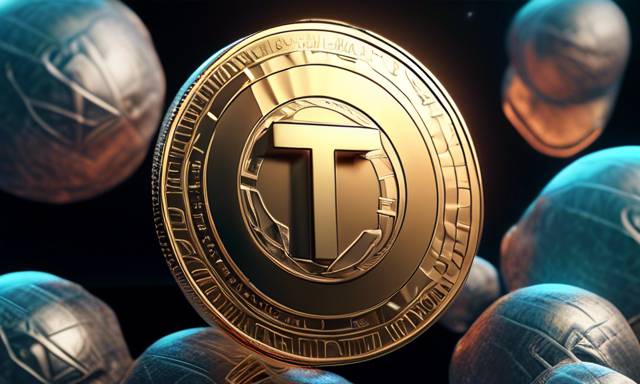Understanding Tether’s Influence and Risks in the Crypto Market 🚀
Tether, the issuer of USDT, the largest stablecoin by market capitalization, has sparked questions regarding the transparency of its financial reserves. As it continues to grow in prominence, concerns about potential investment risks emerge, reminiscent of the collapse of the FTX exchange. Let’s delve into the critical insights regarding Tether’s operations and implications for investors.
Stablecoins and Tether: An Overview of Risks and Opportunities ⚖️
Tether currently claims reserves exceeding $118 billion, controlling a market segment larger than 75% within the stablecoin realm. This enormous influence places it at the heart of the cryptocurrency landscape, contributing to its ongoing expansion.
Despite its substantial role, there are prevalent concerns among investors about Tether’s transparency and governance structure.
The absence of formal audits and verification from independent third parties has intensified worries about a potential liquidity crisis, echoing the tumultuous events that affected FTX. As evidenced in 2021, the Commodities and Futures Trading Commission (CFTC) imposed a $41 million fine on Tether due to misleading claims regarding the assets backing its reserves.
Even with this penalty, Tether has failed to provide adequate reassurances to investors about whether its reserves are sufficient to cover the value of USDT currently in circulation.
Justin Bons, an analyst from Cyber Capital, has voiced that Tether might represent a larger threat to the cryptocurrency ecosystem than what FTX posed previously. He points out that the void of evidence supporting Tether’s reserve claims could lead to a dire liquidity crisis in the future.
Investor Concerns About Tether 📉
One of the primary apprehensions for investors in Tether centers around the lack of independent scrutiny of its reserves.
While Tether does provide attestations from BDO, numerous experts contend that these assessments should not be equated with a formal audit.
A comprehensive audit entails an extensive review of reserves conducted by an independent entity, a process that has yet to occur.
This lack of transparency raises alarms that Tether may struggle to meet large-scale withdrawal demands from users.
A parallel situation unfolded at FTX, where the company faltered due to a lack of liquidity in handling significant withdrawal requests.
However, Sean Lee, co-founder of IDA Finance, asserts that if Tether were to encounter a major failure, it would likely stem from issues with its banking institutions and reserve frameworks rather than mere market fluctuations.
Regardless of these concerns, Tether has shown an ability to withstand pressure. For instance, in May 2022, it successfully processed over $16.7 billion in withdrawal requests without facing significant issues.
This performance has bolstered the confidence of some investors, who consider Tether too entrenched within the system to collapse. Nonetheless, the ongoing absence of thorough audits cultivates skepticism regarding this perspective.
Lack of Transparency in Tether’s Corporate Structure 📋
Another troubling aspect of Tether involves its governance structure. Recently, Tether disclosed a $100 million investment in Adecoagro, acquiring a 9.8% stake in the agricultural company based in Latin America.
This investment has shed light on Tether’s management, demonstrating that its board comprises just two individuals—Giancarlo and Ludovicos.
Bons suggests that this indicates a lack of separation of power regarding the reserves of USDT, giving these two figures complete authority over the company.
This concentration of power, paired with the evident transparency issues, heightens worries regarding reserve management and Tether’s capacity to uphold its claims of backing each USDT with real assets.
Lee underscores that the absence of clarity puts investor confidence at risk, reinforcing that while Tether has demonstrated stability, significant concerns about reserve management and transparency persist.
Ultimately, the lack of independent audits signifies a substantial risk for investors, leaving them vulnerable to potential liquidity crises in the event of widespread withdrawal demands.
For anyone interested in Tether, maintaining a cautious approach is vital. Observing Tether’s future steps regarding transparency policies can provide valuable insights into evaluating both risks and potential opportunities within this dominant stablecoin.





 By
By


 By
By
 By
By
 By
By